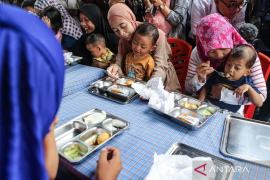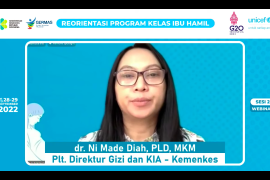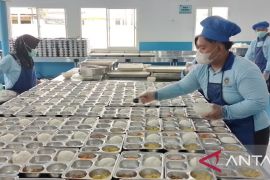"Villages are expected to support stunting convergence policies for pregnant women and children under two years old," the minister remarked in Jakarta, Sunday.
According to Iskandar, villages have a strategic role in the stunting convergence approach that is applied in a coordinated, integrated, and simultaneous manner, with focus on the nutritional quality of the community.
"Villages play an important role in improving nutrition for pregnant women and toddlers, who are the priority targets of stunting prevention programs," he remarked.
Iskandar noted that the strategic role of villages in stunting convergence was in the form of reporting the disbursement of village funds. Hence, villages are required to report stunting convergence plans and activities during the last disbursement of village funds.
Moreover, the minister stated that village profile data collected every year to measure the Development Village Index (IDM) showed that by 2022, there were 3,036,289 pregnant women in the village and 5,332,928 children under the age of two.
From this data, 169,584 pregnant women received special treatment assistance within one month, he remarked.
"However, 169,584 pregnant women still experience chronic energy deficiency. They will receive monthly home visits," Iskandar revealed.
Meanwhile, the minister noted that data on children under two years of age showed that some 2,931,289 children have received complete basic immunization. Furthermore, 3,541,272 children were routinely weighed on a monthly basis and 3,459,769 children's height was measured twice a year.
In order to ensure that the approach to handling stunting is conducted optimally, Iskandar stated that intensive visits to residents' homes are also conducted.
"There were 212,871 homes with malnourished, poor, and stunted children visited by our health officers," he remarked.
In addition, data from the integrated health post (posyandu) staff measurement report on children's growth from zero to 23 months of age showed that 69 percent, or 146,291 village children, are indicated to be stunted, and 300,339 village children are at risk of stunting.
"The convergence rate of village activities for pregnant women and children aged 0-23 months reaches 69 percent," he added.
Related news: High anemia cases affect stunting figures in Yogyakarta: Official
Related news: Local gov't should ensure ultrasound device availability: Minister
Related news: Yogyakarta's villages have stunting eradication team: Health Office
Translator: Zubi Mahrofi, Resinta S
Editor: Sri Haryati
Copyright © ANTARA 2023












